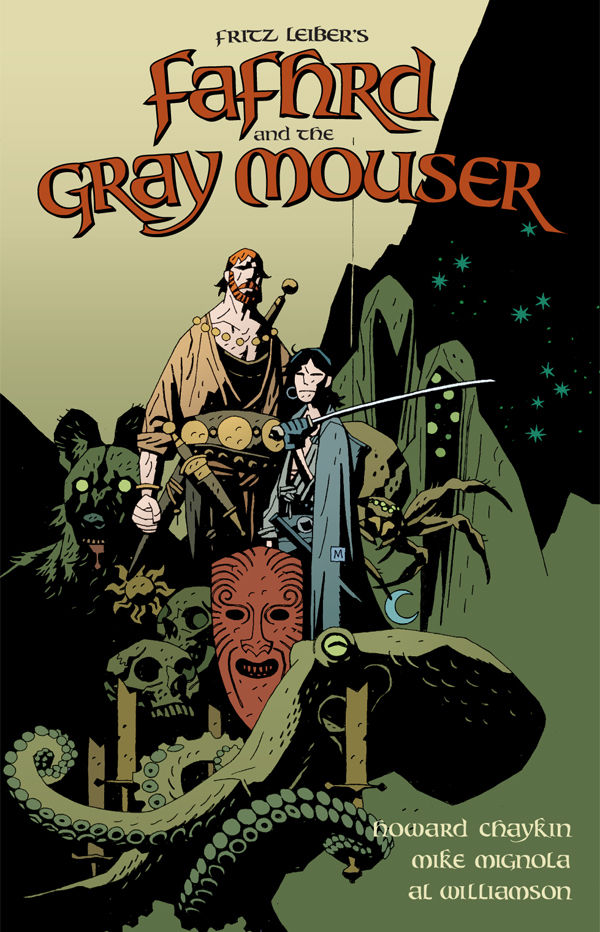Lankhmar bears a deliberate resemblance to Alexandria and even takes its place in 'Adept's Gambit', when our two protagonists do some universe-hopping. Howard Chaykin adapted the stories for Dark Horse Comics; his introduction to the collected edition makes comparison with Manhattan circa 1935. The artist - the superb Mike Mignola - seems to have taken note: his exterior scenes of Lankhmar show as full of tall, narrow tenements with rickety external staircases. At least one panel even seems to have a drum-shaped water tank on a roof-top.
 |
| Fafhrd and the Grey Mounser, Dark Horse Comics |
The story 'Lean Times in Lankhmar' perhaps demonstrates some of this best. The difference between the Gods in Lankhmar and the Gods of Lankhmar is made very clear. But the national character of Lankhmar is always somewhat occluded: aside from some mentions of urban customs. The Gods of Lankhmar are a shadowy presence; the Gods in Lankhmar - and there are a great many Gods passing through - taking centre stage most of the time.
This situates Lankhmar as a city of bustling, competing identities; with religions in competition, living alongside one another - even if one temple is rather more splendid than its neighbours. That the Gods of Lankhmar are content to wait in the background until they need take action allows the cosmopolitan nature of the city (something similar occurs with the traditions of the Thieves Guild in 'Thieves' House'). Considering the Alexandria analogue, the city may have been deliberately founded by a leader of many nations, establishing the nature of the city from the word go, although this is merely speculation on my part.
Nevertheless, this bustling metropolis of Lankhmar seems a model for all D&D cities since; with numerous temples and factions of believers.
***
To re-iterate the purely human, faintly 18th Century, semi-military re-naming of 52 Pages Character Classes:
Fighter: Can stay the same,
Rogue: Rogue? None of that loose cannon stuff here! You're a Ranger from now on!
Wizard: Tempting to say apprentice, but an apprentice would be serving their apprenticeship in safety, one feels (see my Journeyman article). 'Magetrooper' or something of the sort feels too on the nose; merely saying a player is Talented or a Talent or some such defies the scholarly, Vancian magic of The 52 Pages. Perhaps saying the player is a 'Newly-Qualified Magician' works best.
Prophet: Devout Follower of the XYZ, presumably becoming a Prophet of the XYZ
Dwarf: Pioneer
Elf: Scout or Guide
Gnome: Skirmisher
***
To speak on the 'Pietistic Discipline' naming of things: the nature of a specific denomination with -ist and -ism lends an Early Modern air to things, as well as implying that all the believers involved are of one faith, as they are of one organisation, of one species.
Consider also, for this kind of effect renaming other things in a more abstract fashion: EG, the Workings of Providence instead of the Will of Zeus; the Image of the Divine instead of the Face of Ra. This gives things a more modern feel - though be suitably verbose and arcane in your language, or you risk becoming dangerously 20th Century!
No comments:
Post a Comment